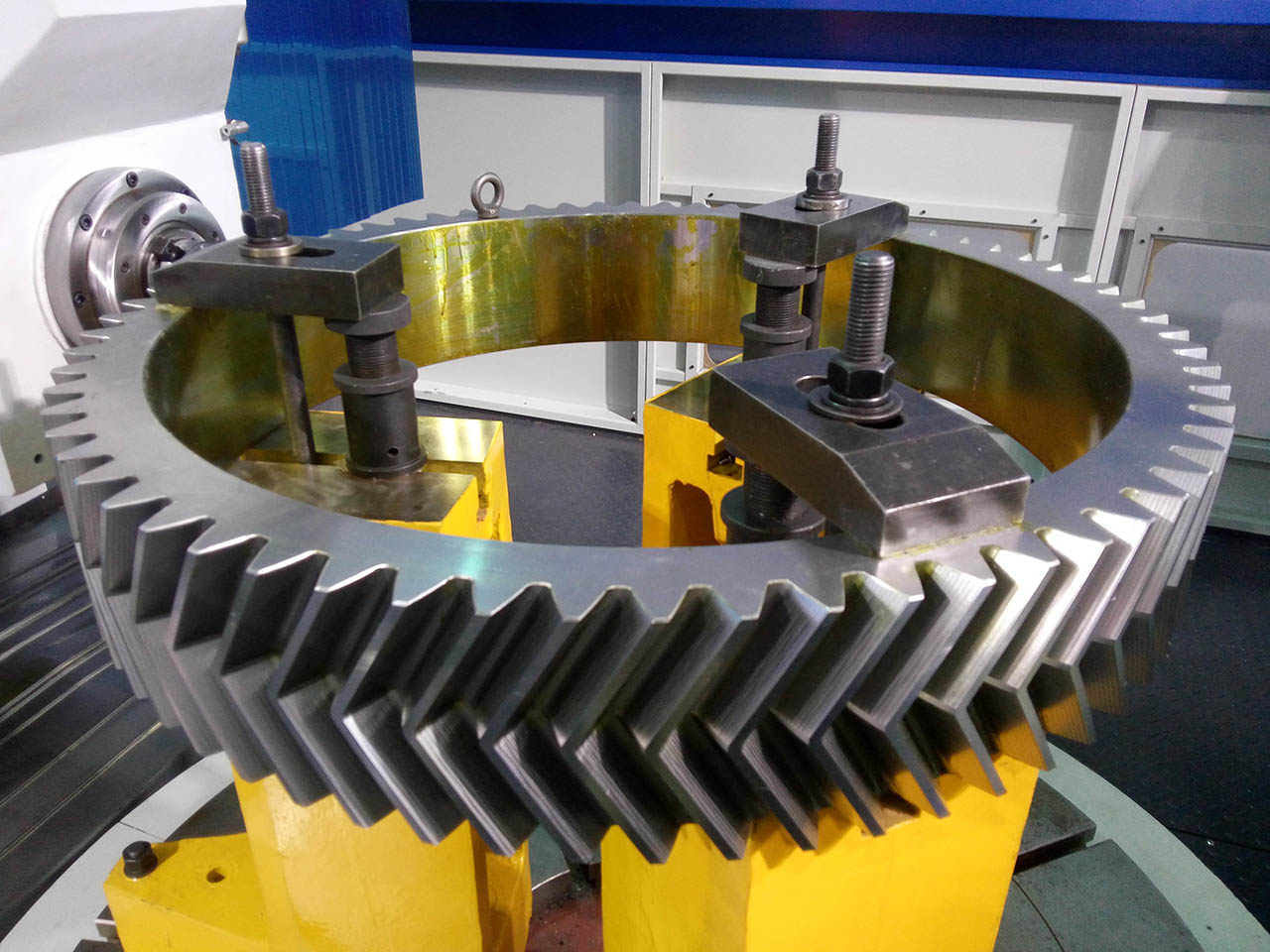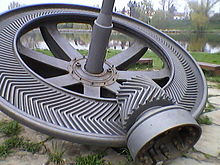Product Description
Key attributes
Other attributes
Applicable Industries
Energy & Mining
Weight (KG)
750
After Warranty Service
Video technical support, Online support
Local Service Location
None
Showroom Location
None
Video outgoing-inspection
Provided
Machinery Test Report
Provided
Marketing Type
Hot Product 2571
Warranty of core components
1 Year
Core Components
worm gear
Heavy transmission gear box custom casting drive large worm gear and shaft
Place of CHINAMFG
ZheJiang , China
Condition
New
Warranty
12Months
Shape
Worm
Brand Name
TS
Material
copper
Standard or Nonstandard
Nonstandard
Direction
OEM
Product name
custom casting drive large worm gear and shaft
Application
Heavy gear box
Quality
High Quailty
Tolerance
0.01mm
Diameter
Min:200mm
Color
OEM
Heat treatment
OEM
MOQ
1 Piece
Standard
ISO
Material
Copper
OUR WORKSHOPS
OUR EQUIPMENTS
Technology Process
|
Material |
Carbon steel,Alloy steel |
||
|
Structure |
Forging,casting |
||
|
Type of gear |
spur gear,helical gear,Planetary Gear |
||
|
Heat treatment |
Quenching and tempering |
||
|
Process |
forging, rough machining, QT, finish machining |
||
|
Main equipments |
hobbing,CNC machine |
||
|
Module |
up to 200 |
||
|
Precision of gear |
Grinding ISO Grade 5-7 & Hobbing ISO Grade 8-9 |
||
|
Inspection |
Raw material inspection, UT,physical property test,dimension inspect |
||
|
Application |
Mining machinery, mill, kiln and other equipment |
||
OUR CERTIFICATE
OUR CUSTOMER FEEDBACK
CONTACT
/* January 22, 2571 19:08:37 */!function(){function s(e,r){var a,o={};try{e&&e.split(“,”).forEach(function(e,t){e&&(a=e.match(/(.*?):(.*)$/))&&1
| Application: | Industry |
|---|---|
| Hardness: | Hb190-Hb300 |
| Gear Position: | External Gear |
| Samples: |
US$ 100/Piece
1 Piece(Min.Order) | Order Sample |
|---|
| Customization: |
Available
| Customized Request |
|---|
.shipping-cost-tm .tm-status-off{background: none;padding:0;color: #1470cc}
| Shipping Cost:
Estimated freight per unit. |
about shipping cost and estimated delivery time. |
|---|
| Payment Method: |
|
|---|---|
|
Initial Payment Full Payment |
| Currency: | US$ |
|---|
| Return&refunds: | You can apply for a refund up to 30 days after receipt of the products. |
|---|

What are the benefits of using a herringbone gear mechanism?
Using a herringbone gear mechanism offers several benefits due to its unique design and characteristics. Here’s a detailed explanation of the advantages of using a herringbone gear mechanism:
- High Load Capacity: Herringbone gears are capable of handling high torque loads due to their double helical tooth design. The opposing helix angles of the two sides of the gear create a balanced load distribution, allowing for increased load-carrying capacity compared to other gear types. This makes herringbone gears suitable for applications that involve heavy loads and high power transmission requirements.
- Bidirectional Power Transmission: Herringbone gears are capable of transmitting power in both directions. The double helical tooth profile cancels out axial thrust forces that would occur in single helical gears, allowing for bidirectional power transfer without the need for additional thrust bearings or special mechanisms. This feature is particularly advantageous in applications where reversible power transmission is required.
- Smooth and Quiet Operation: The double helical tooth design of herringbone gears helps to cancel out axial and radial forces, resulting in smooth and quiet operation. The opposing helix angles of the two sides of the gear minimize gear vibrations and reduce noise levels during engagement. This makes herringbone gears suitable for applications where low noise and vibration are desired, such as precision machinery, printing presses, and automotive transmissions.
- Improved Gear Tooth Strength: The double helical tooth design of herringbone gears provides enhanced tooth strength compared to single helical gears. The opposing helix angles create a self-centering effect that reduces tooth deflection and improves load distribution along the tooth surfaces. This results in increased tooth strength, reduced wear, and improved overall gear durability, making herringbone gears suitable for high-load and high-speed applications.
- Efficient Torque Transfer: Herringbone gears offer efficient torque transfer due to their large contact area and overlapping tooth engagement. The double helical tooth profile provides a larger contact ratio compared to spur gears, resulting in improved power transmission efficiency and reduced stress concentrations on the gear teeth. This efficient torque transfer contributes to the overall performance and energy efficiency of the gear system.
- Axial Thrust Elimination: The double helical tooth profile of herringbone gears allows for the cancellation of axial thrust forces. The opposing helix angles create equal and opposite axial forces, effectively eliminating the net axial thrust on the gear shaft. This eliminates the need for additional thrust bearings or special provisions to counteract axial loads, simplifying the gear system design and reducing complexity and cost.
These are some of the key benefits of using a herringbone gear mechanism. Their high load capacity, bidirectional power transmission capability, smooth and quiet operation, improved tooth strength, efficient torque transfer, and axial thrust elimination make them advantageous in a wide range of applications across various industries.

How do you maintain and service a herringbone gear system?
Maintaining and servicing a herringbone gear system is crucial for ensuring its optimal performance, longevity, and reliability. Regular maintenance and service activities help identify and address potential issues, minimize wear, and extend the lifespan of the gear system. Here’s a detailed explanation of how to maintain and service a herringbone gear system:
- Inspection: Conduct regular visual inspections of the gear system to identify any signs of wear, damage, or misalignment. Inspect the gear teeth, shafts, bearings, and other components for any visible abnormalities, such as pitting, scoring, cracks, or excessive wear. Check for oil leaks, loose fasteners, or any other potential issues that may affect the gear system’s performance.
- Lubrication: Ensure that the lubrication of the herringbone gear system is adequate and meets the manufacturer’s recommendations. Monitor the lubricant level and condition regularly. Check for proper lubricant distribution and coverage on the gear teeth and contact surfaces. Replenish or replace the lubricant as necessary to maintain the required film thickness and lubricating properties.
- Alignment and Clearance: Check and maintain proper shaft alignment to prevent misalignment-related issues. Use alignment tools such as dial indicators or laser alignment systems to verify the parallelism and concentricity of the gear system shafts. Ensure that the gear engagement is correct and that there is appropriate gear backlash. Make any necessary adjustments to optimize gear alignment and clearance as per the manufacturer’s guidelines.
- Fasteners and Connections: Regularly inspect and tighten all fasteners, such as bolts, set screws, or clamps, to ensure that they are securely fastened. Loose fasteners can lead to misalignment, vibration, and potential gear system failure. Follow the recommended torque specifications provided by the manufacturer when tightening the fasteners to avoid over-tightening or under-tightening.
- Monitoring and Analysis: Implement a monitoring and analysis program to track the performance of the herringbone gear system over time. This can include vibration analysis, temperature monitoring, and oil analysis. These techniques can help identify any abnormal conditions, such as excessive vibration, increased temperatures, or the presence of contaminants or wear particles in the lubricant. Regular analysis and monitoring can aid in detecting potential issues early and taking appropriate corrective actions.
- Repair and Replacement: If any signs of wear, damage, or abnormal conditions are detected during inspections or monitoring, take prompt action to address the issues. Depending on the severity of the problem, this may involve repairing or replacing worn or damaged components, such as gear teeth, bearings, or seals. Follow the manufacturer’s guidelines and consult with qualified technicians or professionals for any necessary repair or replacement procedures.
- Documentation and Record-keeping: Maintain accurate documentation and records of all maintenance and service activities performed on the herringbone gear system. This includes inspection reports, lubrication records, repair or replacement history, and any other relevant information. These records can serve as a reference for future maintenance, help track the gear system’s performance, and aid in troubleshooting or warranty claims if needed.
It is important to note that the specific maintenance and service requirements may vary depending on the gear system design, application, and operating conditions. Always refer to the manufacturer’s guidelines, technical documentation, and any applicable industry standards for the recommended maintenance practices and service intervals specific to your herringbone gear system.

What are the applications of herringbone gears?
Herringbone gears, also known as double helical gears, find applications in various industries due to their unique design and advantages. Here’s a detailed explanation of the applications of herringbone gears:
- Power Transmission Systems: Herringbone gears are commonly used in power transmission systems that require efficient torque transfer and smooth operation. They are employed in gearboxes, drivetrains, and speed reducers where high torque and bidirectional power transmission are critical.
- Heavy Machinery: Herringbone gears are found in heavy machinery such as construction equipment, mining machinery, and industrial machinery. These gears can handle large loads and provide reliable torque transmission, making them suitable for applications that involve heavy-duty operations.
- Oil and Gas Industry: The oil and gas industry extensively uses herringbone gears in equipment like pumps, compressors, and turbines. These gears are capable of handling high torque requirements and provide reliable performance in demanding environments.
- Marine Propulsion Systems: Herringbone gears are utilized in marine propulsion systems, including ship propulsion drives and propeller shaft arrangements. Their ability to transmit high torque efficiently and smoothly makes them ideal for marine applications.
- High-Speed Gearboxes: Herringbone gears are employed in high-speed gearboxes where torque is transmitted at high rotational speeds. They are used in applications such as wind turbine gearboxes, aerospace systems, and high-performance automotive transmissions.
- Metalworking Machinery: Herringbone gears are utilized in metalworking machinery, such as milling machines, lathes, and gear cutting machines. These gears provide precise and reliable power transmission, enabling the machinery to perform various machining operations with accuracy.
- Railway Systems: Herringbone gears find applications in railway systems, particularly in locomotives and rolling stock. They facilitate efficient power transfer and contribute to smooth and reliable train operation.
- Printing Presses: Herringbone gears are used in printing presses to transmit power between different components of the press. Their ability to minimize vibrations and noise is advantageous in printing applications that require precision and high-quality printing results.
- Steel Mills: Herringbone gears are employed in steel mills for various applications, including rolling mills, heavy-duty cranes, and gear couplings. These gears withstand the demanding conditions of steel manufacturing, such as high loads, vibrations, and harsh environments.
These are just a few examples of the applications of herringbone gears. Their unique tooth design, load-carrying capacity, bidirectional power transmission capability, and smooth operation make them suitable for a wide range of industries and applications that require efficient and reliable torque transmission.


editor by CX 2024-04-09